It looks like you're using an Ad Blocker.
Please white-list or disable AboveTopSecret.com in your ad-blocking tool.
Thank you.
Some features of ATS will be disabled while you continue to use an ad-blocker.
share:
a reply to: Flyingclaydisk
It's hard to tell if it's completed or not but what was originally the PanAm Building is right in the middle and it dates from the early 60's.
It's hard to tell if it's completed or not but what was originally the PanAm Building is right in the middle and it dates from the early 60's.
a reply to: Oppositeoftruth
Well, I can just about guarantee you this...if the photo made it onto a View-Master reel then it almost certainly exists somewhere else. Very few, if any, photos of the day went straight onto view-master reels without being produced as actual frameable photos first.
Well, I can just about guarantee you this...if the photo made it onto a View-Master reel then it almost certainly exists somewhere else. Very few, if any, photos of the day went straight onto view-master reels without being produced as actual frameable photos first.
originally posted by: AugustusMasonicus
You're facing the wrong direction. Your photo is looking downtown, the negative is looking uptown.
Could be, I was matching the 3 vents on the side. This might be a better direction.
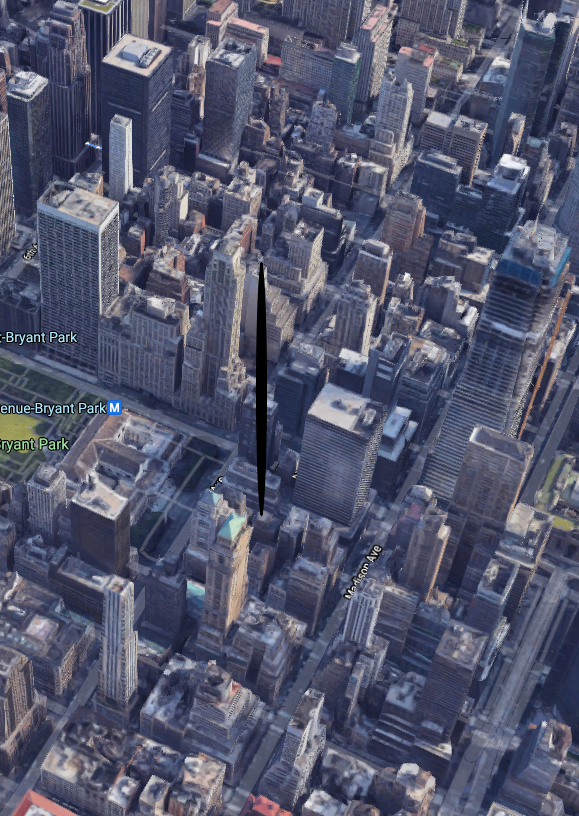
originally posted by: Oppositeoftruth
I was thinking around the 70s, I don't know why I just got that feeling.
I'd have to sit and study it more but it's 100% post-1962.
originally posted by: [post=25938356]A
That's 100% it. The building in the negative with the green roof is 11 East 39th Street.
39th and Madison too.
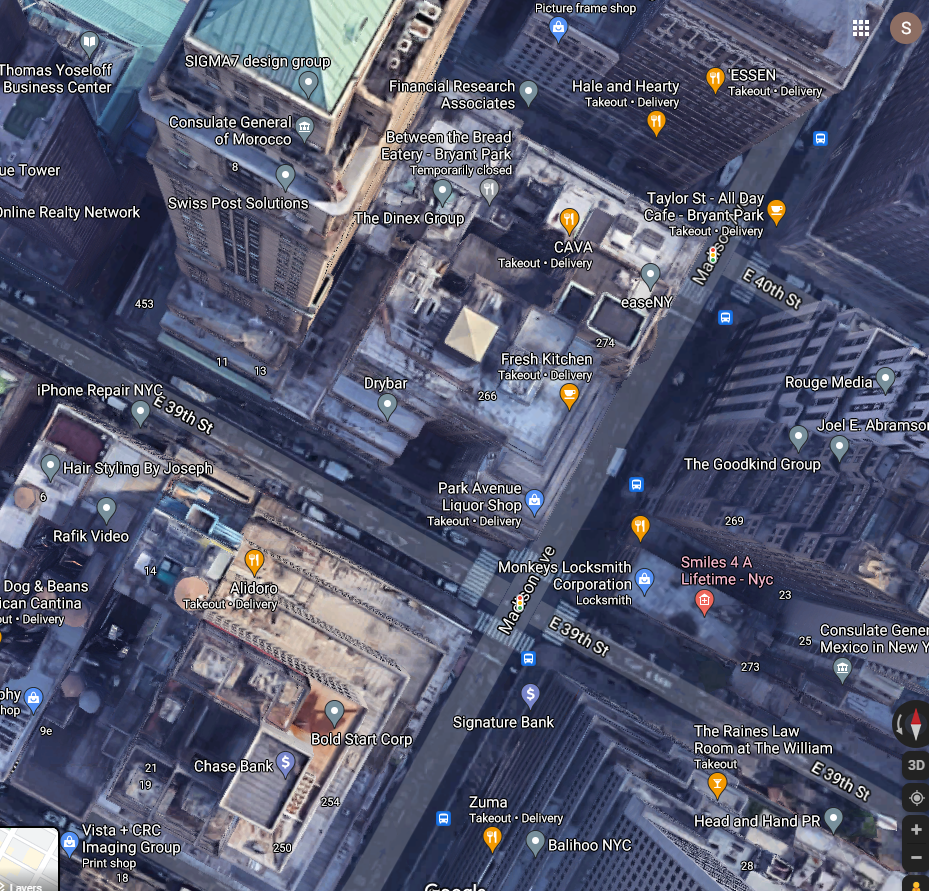
originally posted by: Flyingclaydisk
That picture could be from the other direction. The building would be the same on both sides.
It only has the vents on one side
a reply to: Flyingclaydisk
Well the piece of film it's on has a Kodak name on it, it doesn't say anything about view master. Also I did an image search through Google and it came up with nothing of relevance, one would think if it was a vm stock photo it'd be somewhere. I'm not claiming you're wrong but It looks more like a personal piece.
Well the piece of film it's on has a Kodak name on it, it doesn't say anything about view master. Also I did an image search through Google and it came up with nothing of relevance, one would think if it was a vm stock photo it'd be somewhere. I'm not claiming you're wrong but It looks more like a personal piece.
a reply to: Oppositeoftruth
The tall one with the two long spokes on the top? Maybe the Hancock in Chicago.
The tall one with the two long spokes on the top? Maybe the Hancock in Chicago.
a reply to: TerryMcGuire
Have you read none of the posts in here? It is NYC, the building was identified two posts in
Have you read none of the posts in here? It is NYC, the building was identified two posts in
a reply to: BlankUsername
Who died and made you the ATS cop on the beat, huh? I don't got to show you no stinkin badges so take your little tin badge and wave it elsewhere...
Who died and made you the ATS cop on the beat, huh? I don't got to show you no stinkin badges so take your little tin badge and wave it elsewhere...
a reply to: Oppositeoftruth
VM wasn't a film or film development technology; that all went mostly to Kodak and a select few others (depending on the size of the film). I would actually be pretty surprised if the film wasn't Kodak, to be perfectly honest. VM was a slide presentation medium to make pictures look like they were 3-D. You viewed them through a pair of stereoscopic lenses on the VM device, and you were looking at (2) pictures developed at two slightly different focal lengths giving the appearance of three dimensions.
The point was, VM was a thing, popular in the 50's and 60's, not so much now. But the photo in the OP is pretty telling as to what it was taken from. Thus, it was fairly easy to date.
I don't know about the buildings (I'm sure others know way more than me), but I do know about the technology and the history of most photography.
There were also stereoscopic cameras, but those were much earlier. Same idea, but they required multiple exposures to achieve the same result. Different pictures were taken at different focal lengths. Different shots at slightly different angles, both with slightly different depths of field. This is a much better approach to 3-dimensional photography, but it's slow, and if anything moves the picture is blurred.
VM wasn't a film or film development technology; that all went mostly to Kodak and a select few others (depending on the size of the film). I would actually be pretty surprised if the film wasn't Kodak, to be perfectly honest. VM was a slide presentation medium to make pictures look like they were 3-D. You viewed them through a pair of stereoscopic lenses on the VM device, and you were looking at (2) pictures developed at two slightly different focal lengths giving the appearance of three dimensions.
The point was, VM was a thing, popular in the 50's and 60's, not so much now. But the photo in the OP is pretty telling as to what it was taken from. Thus, it was fairly easy to date.
I don't know about the buildings (I'm sure others know way more than me), but I do know about the technology and the history of most photography.
There were also stereoscopic cameras, but those were much earlier. Same idea, but they required multiple exposures to achieve the same result. Different pictures were taken at different focal lengths. Different shots at slightly different angles, both with slightly different depths of field. This is a much better approach to 3-dimensional photography, but it's slow, and if anything moves the picture is blurred.
edit on 6/17/2021 by Flyingclaydisk because: (no reason given)
originally posted by: AugustusMasonicus
a reply to: Flyingclaydisk
It's hard to tell if it's completed or not but what was originally the PanAm Building is right in the middle and it dates from the early 60's.
Good eye! I, too, thought it was the PanAm building. I even zoomed in to see if I could read "PanAm." (I couldn't.)
Oh, yeah, I might add:
Viewmaster reels employed 16mm film only. That looks like 35mm sprocket holes.
Viewmaster reels employed 16mm film only. That looks like 35mm sprocket holes.
a reply to: TrulyColorBlind
No, actually 35mm "register perforations" are square. If you look at the register perforations (you called them 'sprocket holes') on the pictures in question you will see they are square with rounded corners. This is indicative of 16mm film.
Early 16mm film was perforated down both sides, but later "16mm Super" film was perforated down only one side unless requested otherwise. As you see, this film has square perforations with rounded corners and is perforated down both sides, indicating early(-er) 16mm film, and not later 16mm Super film.
So, it's definitely 16mm film. The bigger question is, what is the origin of the picture itself? I am personally leaning toward the picture being a 16mm photograph of a print from a 35mm negative, taken on a light table, for the purposes of creating the VM reel.
ETA - The other operable question here is, why are the register perforations shown at all? Normally these would be cropped out. Generally this is done to be 'artsy' with a picture, to make it look more antique. Maybe it's just to date the picture without any other reference (unless you know period architecture, which most don't). Back in the day, these perforations would have been cropped. In fact, the fact that they show up at all is almost certain proof that the picture on the VM reel is actually a photograph of another negative or 'positive' (i.e. slide). Otherwise, you would not be able to see them...unless you put the negatives in a larger tray during the enlarging process and exposed the perforations while composing the print.
No, actually 35mm "register perforations" are square. If you look at the register perforations (you called them 'sprocket holes') on the pictures in question you will see they are square with rounded corners. This is indicative of 16mm film.
Early 16mm film was perforated down both sides, but later "16mm Super" film was perforated down only one side unless requested otherwise. As you see, this film has square perforations with rounded corners and is perforated down both sides, indicating early(-er) 16mm film, and not later 16mm Super film.
So, it's definitely 16mm film. The bigger question is, what is the origin of the picture itself? I am personally leaning toward the picture being a 16mm photograph of a print from a 35mm negative, taken on a light table, for the purposes of creating the VM reel.
ETA - The other operable question here is, why are the register perforations shown at all? Normally these would be cropped out. Generally this is done to be 'artsy' with a picture, to make it look more antique. Maybe it's just to date the picture without any other reference (unless you know period architecture, which most don't). Back in the day, these perforations would have been cropped. In fact, the fact that they show up at all is almost certain proof that the picture on the VM reel is actually a photograph of another negative or 'positive' (i.e. slide). Otherwise, you would not be able to see them...unless you put the negatives in a larger tray during the enlarging process and exposed the perforations while composing the print.
edit on 6/18/2021 by Flyingclaydisk because: (no reason given)
Interestingly, I probably would have dated the picture in the OP as late '40's to early 50's had it not been for the color validation. Not knowing
the skyline as well as others here, that's probably where I would have started without the color. There were color pictures during this time, but
they were rare, and people were still getting used to the format. Plus, it was kind of sketchy at first.
What I find interesting about this observation is how much lag-time there was in the architectural profession during this period. America was still reeling from nearly two decades of war at the time, and there wasn't really any need to violate the..."if it ain't broke, don't fix it"...rule when it came to industrial heavy architecture. Yeah, you had the Frank Lloyd Wright's and others doing smaller more advanced stuff, but much of the big architecture of the day didn't really start to radically change until the mid-60's and beyond.
What I find interesting about this observation is how much lag-time there was in the architectural profession during this period. America was still reeling from nearly two decades of war at the time, and there wasn't really any need to violate the..."if it ain't broke, don't fix it"...rule when it came to industrial heavy architecture. Yeah, you had the Frank Lloyd Wright's and others doing smaller more advanced stuff, but much of the big architecture of the day didn't really start to radically change until the mid-60's and beyond.
a reply to: Oppositeoftruth
a reply to: Flyingclaydisk
a reply to: AugustusMasonicus
a reply to: BlankUsername
a reply to: TrulyColorBlind
1)First things first- the image is backwards.
The facing direction and positions of the buildings didn't match
the 3D model on Maps until it was flipped, then matched exactly.
Here's the true-to life image:
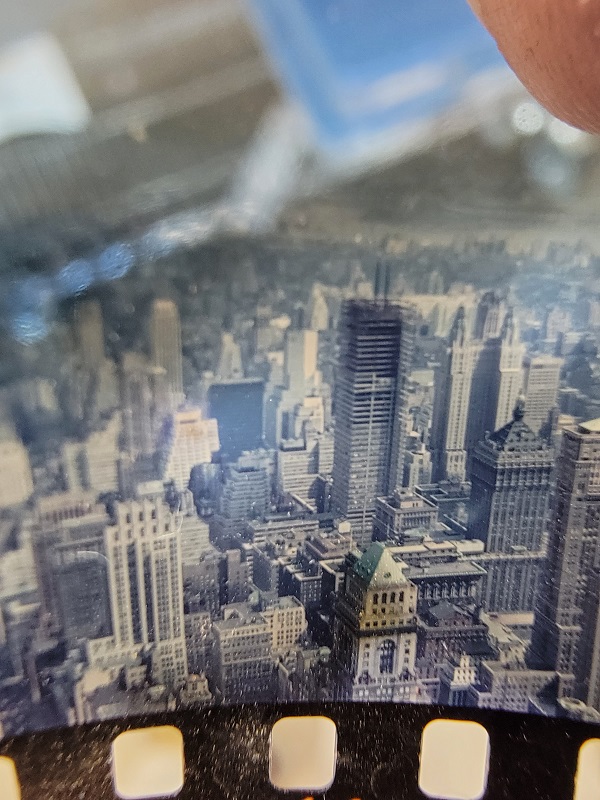
2)The building under construction is 270 Park Avenue
Originally built as the Union Carbide Building built between 1957 and 1960
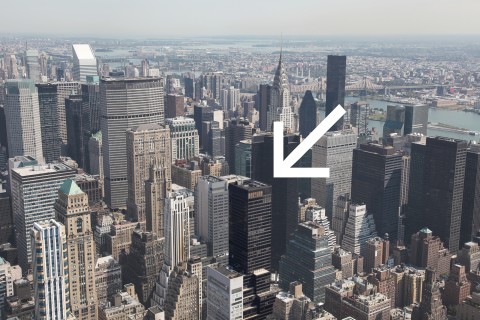
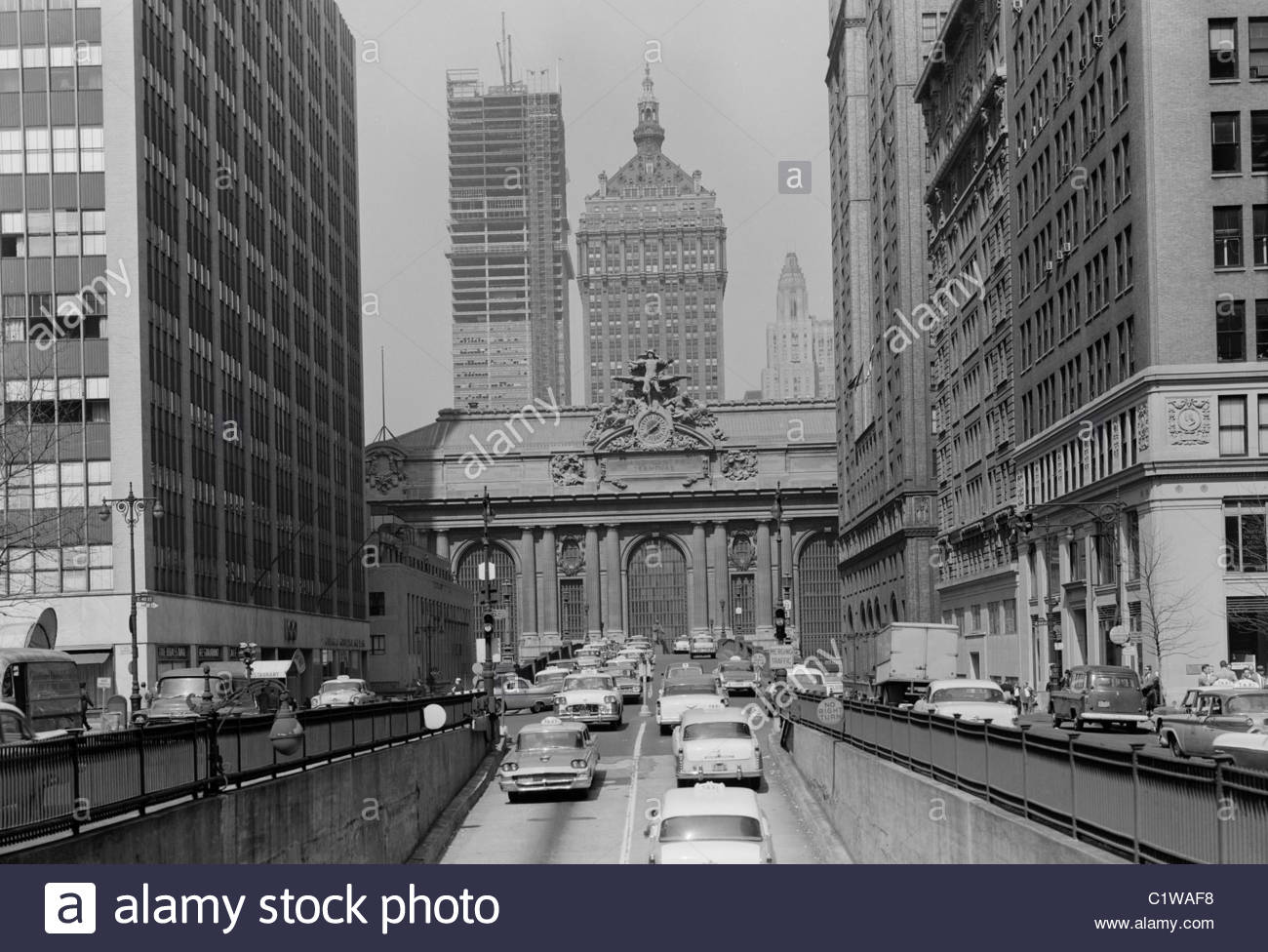
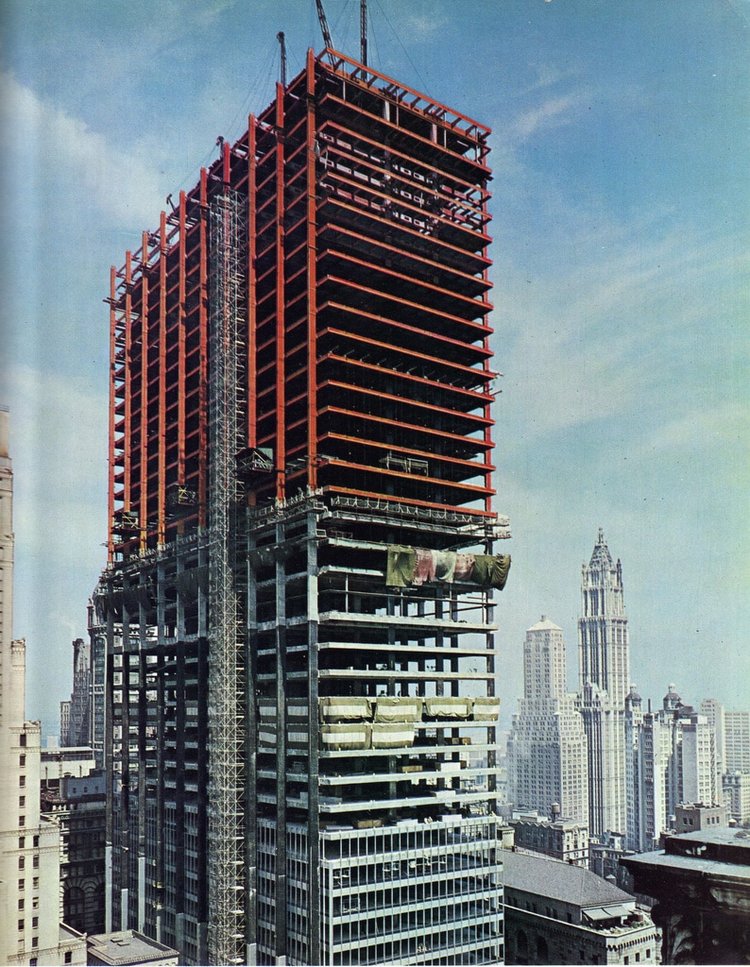
3) Late 1950s, film was mostly medium format 35mm, your photo however used a wider lens such as 50mm.
Which incidentally has exactly the same sprocket holes.
This explains why the buildings appear so close together, too.
Hope this helped
a reply to: Flyingclaydisk
a reply to: AugustusMasonicus
a reply to: BlankUsername
a reply to: TrulyColorBlind
1)First things first- the image is backwards.
The facing direction and positions of the buildings didn't match
the 3D model on Maps until it was flipped, then matched exactly.
Here's the true-to life image:

2)The building under construction is 270 Park Avenue
Originally built as the Union Carbide Building built between 1957 and 1960



3) Late 1950s, film was mostly medium format 35mm, your photo however used a wider lens such as 50mm.
Which incidentally has exactly the same sprocket holes.
This explains why the buildings appear so close together, too.
Hope this helped
edit on 18-6-2021 by ADAMandEVIL because: Eta fixes
originally posted by: Flyingclaydisk
a reply to: TrulyColorBlind
No, actually 35mm "register perforations" are square. If you look at the register perforations (you called them 'sprocket holes') on the pictures in question you will see they are square with rounded corners. This is indicative of 16mm film.
No, that is incorrect. 35mm sprocket holes are rectangular in shape. These in this particular negative only look square because they are foreshortened because the OP is holding the negative in a crooked manner. That's why the top edge is out of focus, (it's closer to his camera than the middle of the image, which is in focus), and the very bottom is also out of focus because it's further away from the focal plane of the OP's camera.
originally posted by: ADAMandEVIL
a reply to: Oppositeoftruth
a reply to: Flyingclaydisk
a reply to: AugustusMasonicus
a reply to: BlankUsername
3) Late 1950s, film was mostly medium format 35mm, your photo however used a wider lens such as 50mm or more.
35mm film (135) is considered miniature format. The next biggest negative size, which is 127, is considered the smallest "medium" format.
a reply to: TrulyColorBlind
That's not the point. The point was the corners (of the perforations) being rounded versus squared.
Whether the perforations themselves are square or rectangular is not what I was addressing, and frankly I didn't even look.
But whatever, probably arguing a moot point anyway.
That's not the point. The point was the corners (of the perforations) being rounded versus squared.
Whether the perforations themselves are square or rectangular is not what I was addressing, and frankly I didn't even look.
But whatever, probably arguing a moot point anyway.
edit on 6/18/2021 by Flyingclaydisk because: (no reason given)
new topics
-
Speaking of Pandemics
General Conspiracies: 1 hours ago -
Stuck Farmer And His Queue Jumping Spawn
Rant: 1 hours ago -
Paradox of Progress
Ancient & Lost Civilizations: 9 hours ago
top topics
-
Joe Biden gives the USA's Highest Civilian Honor Award to Hillary Clinton and George Soros.
US Political Madness: 12 hours ago, 13 flags -
Winter Storm
Fragile Earth: 12 hours ago, 7 flags -
A great artist and storyteller, for kids of all ages
General Entertainment: 15 hours ago, 6 flags -
Paradox of Progress
Ancient & Lost Civilizations: 9 hours ago, 6 flags -
Biden Face Planted Somewhere
Politicians & People: 14 hours ago, 5 flags -
Stuck Farmer And His Queue Jumping Spawn
Rant: 1 hours ago, 2 flags -
Speaking of Pandemics
General Conspiracies: 1 hours ago, 0 flags
active topics
-
Here we again... CHINA having mass outbreak of something
Diseases and Pandemics • 25 • : xWorldxGonexMadx -
Paradox of Progress
Ancient & Lost Civilizations • 4 • : billxam1 -
Speaking of Pandemics
General Conspiracies • 3 • : billxam1 -
What Is 'Quad Demic'? Mask Mandate Returns In These US States
Diseases and Pandemics • 31 • : billxam1 -
Stuck Farmer And His Queue Jumping Spawn
Rant • 2 • : billxam1 -
The theory that COVID-19 originated in China takes a body blow.
Diseases and Pandemics • 57 • : Lazy88 -
FIEND SLASHED: Sara Sharif’s killer dad ‘has neck & face sliced open with jagged tuna tin lid
Mainstream News • 21 • : Asktheanimals -
Post A Funny (T&C Friendly) Pic Part IV: The LOL awakens!
General Chit Chat • 7989 • : Flyingclaydisk -
A great artist and storyteller, for kids of all ages
General Entertainment • 2 • : Asktheanimals -
Nigel Farage's New Year Message.
Politicians & People • 21 • : gortex
